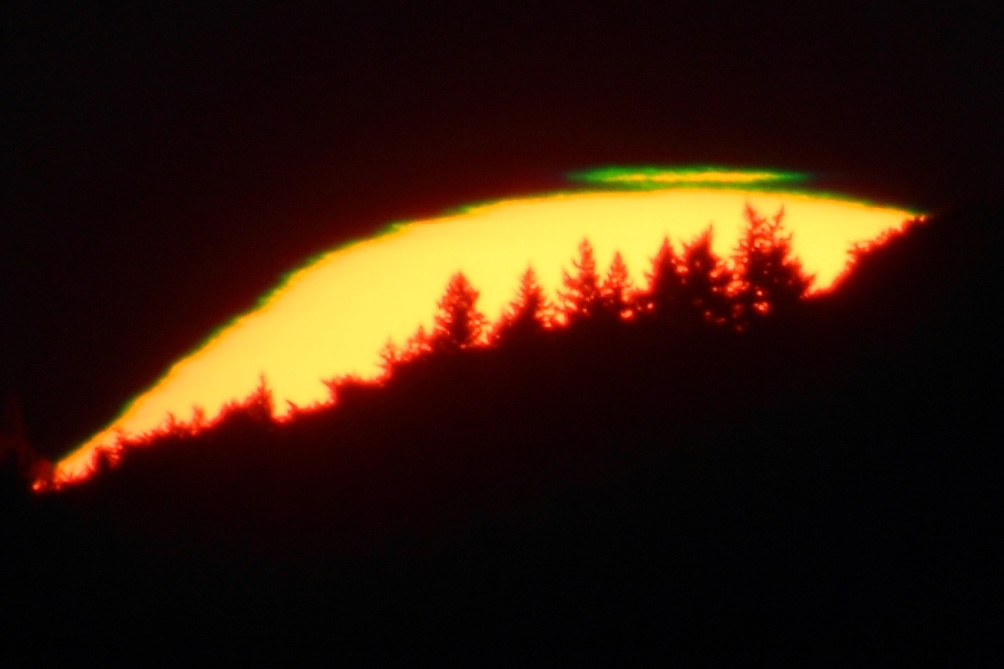- The Green Rim, which is almost always visible at the upper edge of the sun with binoculars and becomes wider as the sun sinks lower; at the same time, the lower edge turns red. Often, it remains visible as a green strip even after sunset.
- The Green Segment, which occurs when the upper segment of the setting sun detaches due to mirage effects and turns green. This form is usually preceded by a strong distortion of the solar disk.
- The actual Green Flash or Green Ray is extremely rare to see with the naked eye. It resembles a green flame or tuft and is observed at the moment the sun disappears behind the horizon. This phenomenon is often visible for only a fraction of a second, or under favorable conditions for a few seconds.
Explanation
The Green Flash is an atmospheric refraction phenomenon, appearing at the top edge of the sun as a brief green flash. It is rarely seen with the naked eye, primarily because specific conditions are needed for its occurrence, but also because many do not know when and where to look for it.
The green flash can take three different forms:
The Green Ray in Literature
Have you ever seen the sun set on the horizon? - Yes, of course! - Have you followed it until the upper edge of its disc just touched the horizon and wanted to dive down? - Most likely, yes. - But have you noticed the phenomenon that occurs with the last ray of the sun when the sky is without fog and completely clear? - Perhaps not. - Well, the next time you have the opportunity for this observation (it is very rare), make sure that it is not a red ray you will see, but a green ray, beautifully green, of a green that no painter can have on their palette, a green that nature has produced nowhere else, neither in the variety of plant colors nor in the color of the clearest seas! If there is a green in paradise, then it can be no other than this green, the true green of hope.
[Jules Verne: Le Rayon vert] Terrace on a dune, wide view over the North Sea. Water deep blue, cloudless sky, no haze, no mist, horizon taut and sharp. White veils appear light blue, all shadows fall on it through a special blue. Sun, large shiny copper disc, shines in golden glowing air, sinks like a fireball into the sea, a fisherman passes by, does not go up in flames. The sun remains copper, is now almost gone, a spot, clear, blue-green flame like a jewel in a golden setting on dark blue sea, the green ray is over.
[J.P.F. van der Mieden van Opmeer: Hemel en Dampkring 30, 234f, 1932]
[Jules Verne: Le Rayon vert] Terrace on a dune, wide view over the North Sea. Water deep blue, cloudless sky, no haze, no mist, horizon taut and sharp. White veils appear light blue, all shadows fall on it through a special blue. Sun, large shiny copper disc, shines in golden glowing air, sinks like a fireball into the sea, a fisherman passes by, does not go up in flames. The sun remains copper, is now almost gone, a spot, clear, blue-green flame like a jewel in a golden setting on dark blue sea, the green ray is over.
[J.P.F. van der Mieden van Opmeer: Hemel en Dampkring 30, 234f, 1932]

